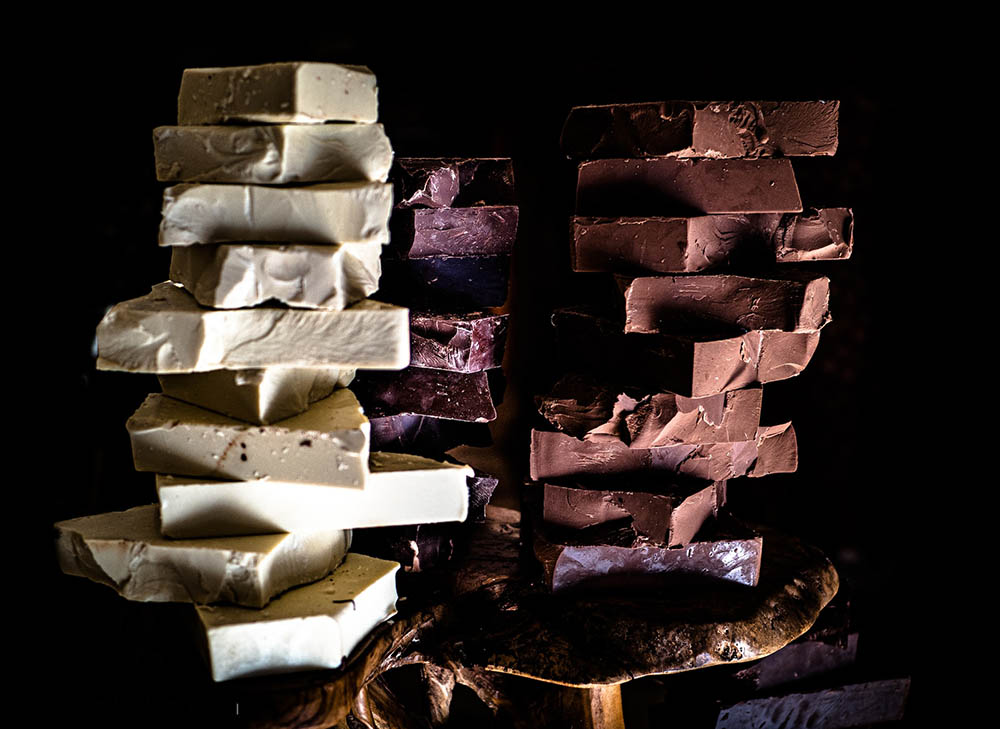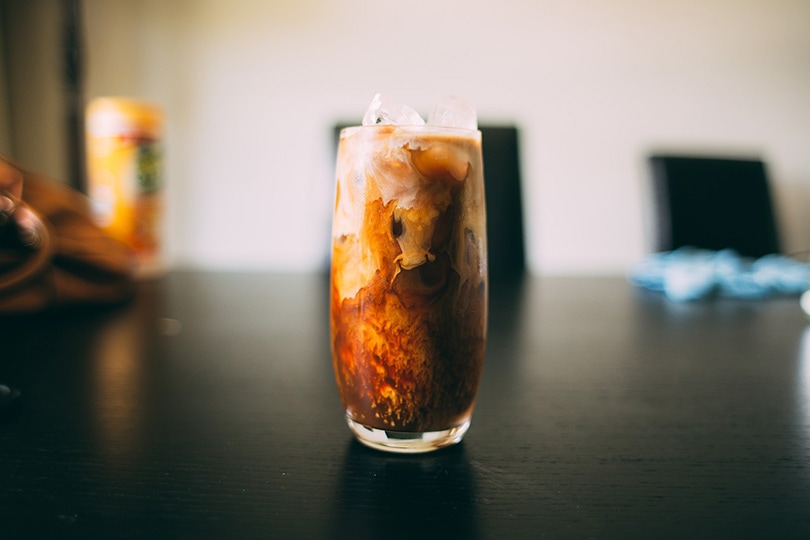
Chocolate is one of the most beloved snacks in the world, although not everyone knows that its mood-boosting effects are partly thanks to a small amount of caffeine from the cocoa bean. Different types of chocolate are processed in slightly different ways that make a huge difference in their caffeine content, with white chocolate containing no caffeine whatsoever. Let’s check out how much caffeine the other types of chocolate have, how white chocolate compares, and other relevant info.

How Is Chocolate Made?
The seeds of the cacao fruit, called cocoa beans, are first collected and deshelled. Then they’re fermented, dried, and liquified. There are two products that come from this process: cocoa butter and cocoa solids. The latter of these is what contains caffeine. Other ingredients like sugar and lecithin are added as well.
Dark chocolate contains mostly cocoa solids, while milk chocolate has a mix of cocoa solids and butter. White chocolate is the only chocolate product to contain no cocoa solids at all, which is why it’s much lighter than other chocolates.

How Much Caffeine Is in Chocolate?
We know that white chocolate has no caffeine, but what about dark and milk chocolate? For that matter, how much caffeine do our favorite candy bars have? Let’s check it out below.
- White chocolate: 0 milligrams per ounce
- Milk chocolate: 9 milligrams per 1.55 ounces
- Dark chocolate: 12 milligrams per ounce
Using that as a baseline, let’s find out how much caffeine our favorite chocolate candies have in them.
- 3 Musketeers: 3 milligrams per 2.3 ounces
- Almond Joy: 3 milligrams per 1.6 ounces
- Hershey’s Milk Chocolate: 10 milligrams per 1.55 ounces
- Hershey’s Special Dark Chocolate: 31 milligrams per 1.45 ounces
- Kit-Kat: 6 milligrams per 1.5 ounces
- M&M Milk Chocolate: 7 milligrams per 1.75 ounces
- Milky Way: 5 milligrams per 2.05 ounces
- Milky Way Midnight: 15 milligrams per 1.76 ounces
- Reese’s Peanut Butter Cups: 4 milligrams per 1.5 ounces
- Snickers: 5 milligrams per 1.7 ounces
- Twix: 4 milligrams per 2 ounces

How Much Caffeine Do Other Products Contain?
Other than candy, many other household foods contain chocolate or cocoa, which grants them small amounts of caffeine. Here are just a few that you may have in your home.
- Semi-sweet chocolate chips: 105 milligrams per 6 ounces
- Chocolate milk: 2 milligrams per 6 ounces
- Cocoa powder: 12 milligrams per tablespoon
- Hershey’s Chocolate Syrup: 5 milligrams per 1.2 ounces
- Nutella: 3 milligrams per tablespoon
- Generic chocolate ice cream: 7 milligrams per 3 ounces
- Chocolate frosting: 1 milligram per 2 tablespoons
What Else Is in Chocolate?
As it turns out, caffeine isn’t the only mood-boosting ingredient in chocolate. Chocolate contains a chemical called theobromine, which gives it its signature bitter taste. Theobromine is similar to caffeine in that it helps increase alertness and improve mood.
Caffeine and theobromine together are thought to complement each other and are responsible for the happy feeling you can get from eating chocolate. Theobromine also has anti-inflammatory properties, inhibits tumor growth, and even suppresses coughs.
About 50 grams of dark chocolate contains 19 milligrams of caffeine and 250 milligrams of theobromine. Unlike the relatively small amount of caffeine in chocolate, this is a somewhat high amount of theobromine. In fact, 250 milligrams is the recommended upper limit for most people per day. If you exceed that, you may suffer shaking, insomnia, and agitation.


Conclusion
Chocolate is one of the most popular sweets around the world, with more than 80% of adults worldwide eating it annually. While white chocolate has no caffeine, milk and dark chocolate have higher amounts that can boost energy levels and put you in a good mood.
Featured Image Credit: Theon Nord, Unsplash














